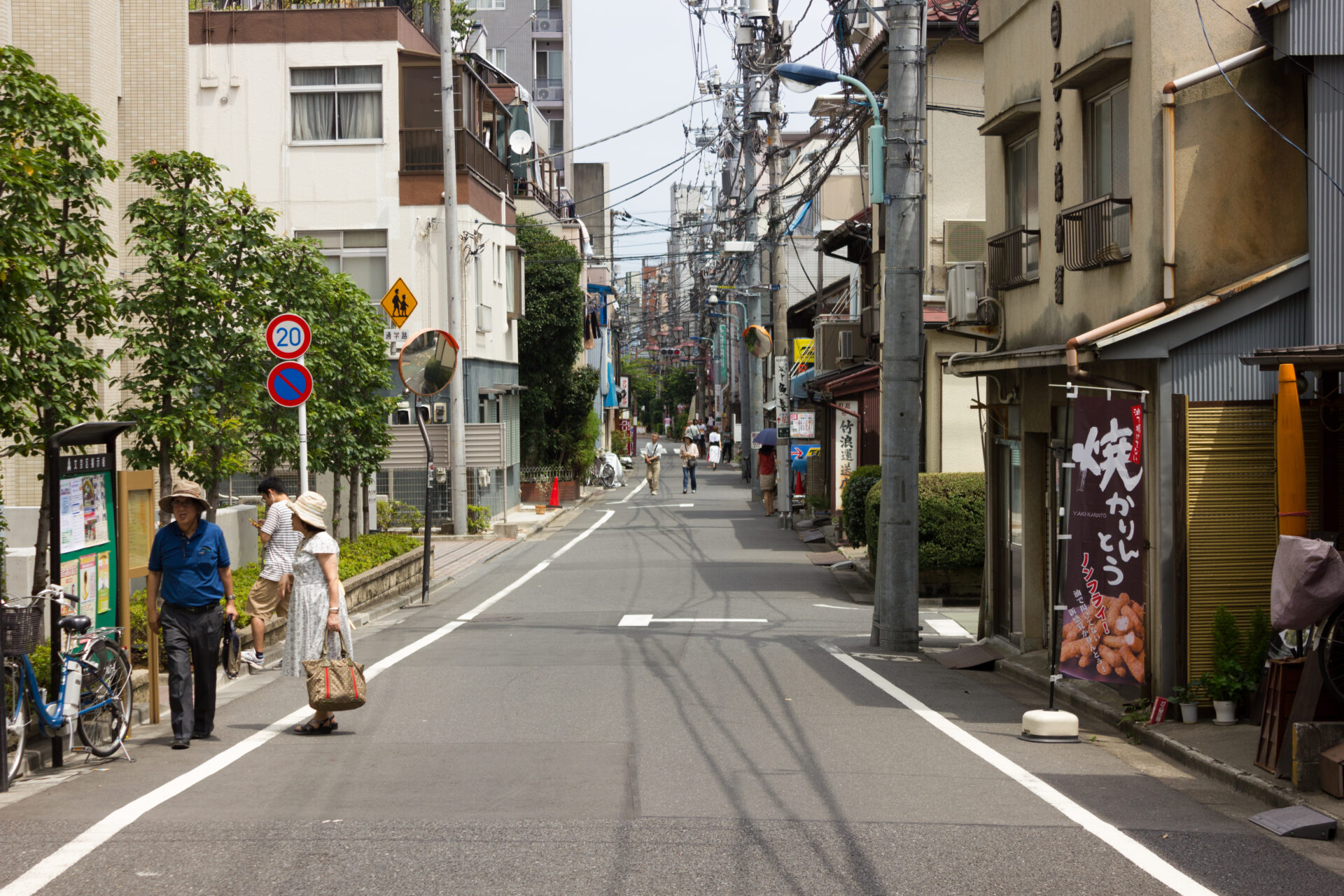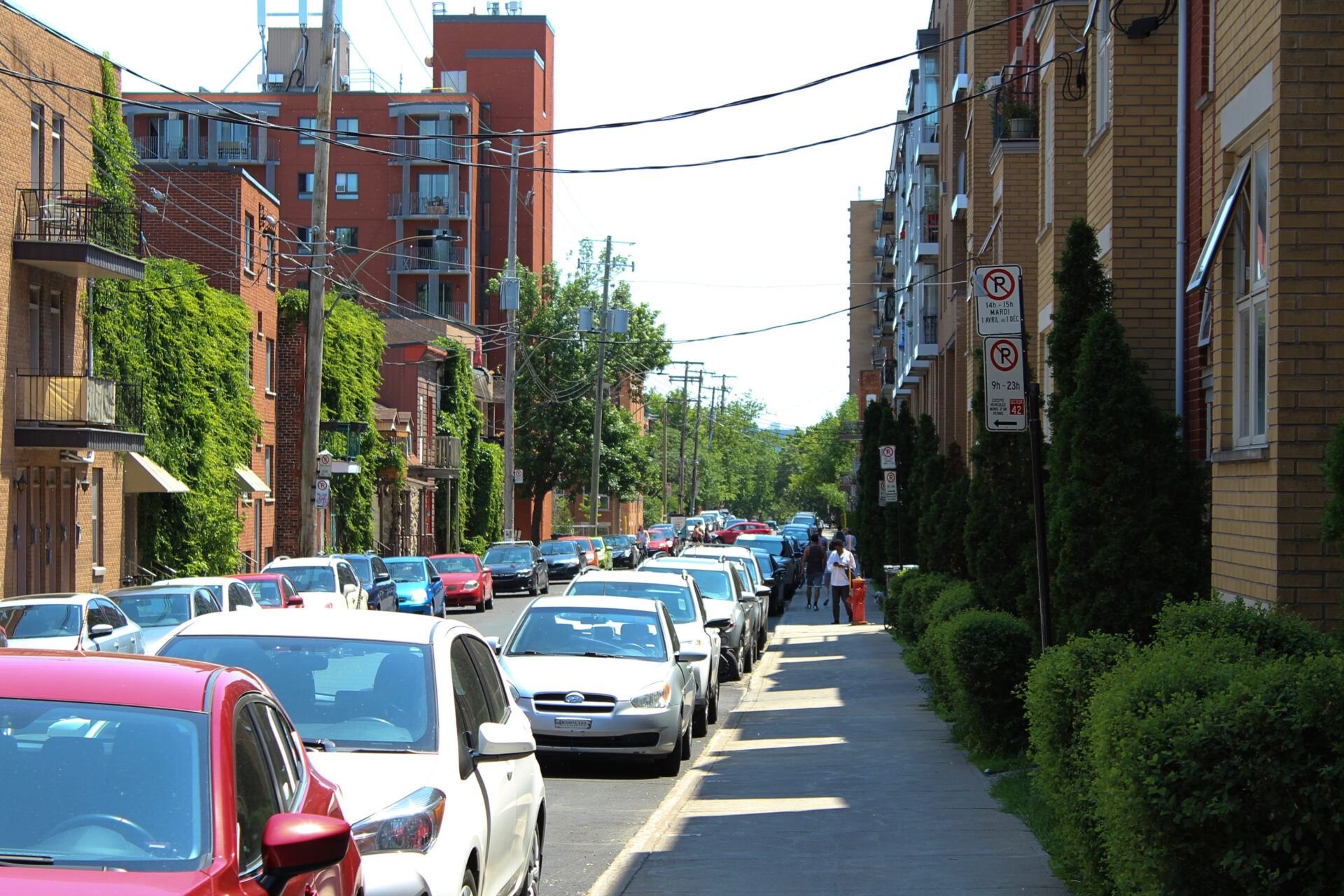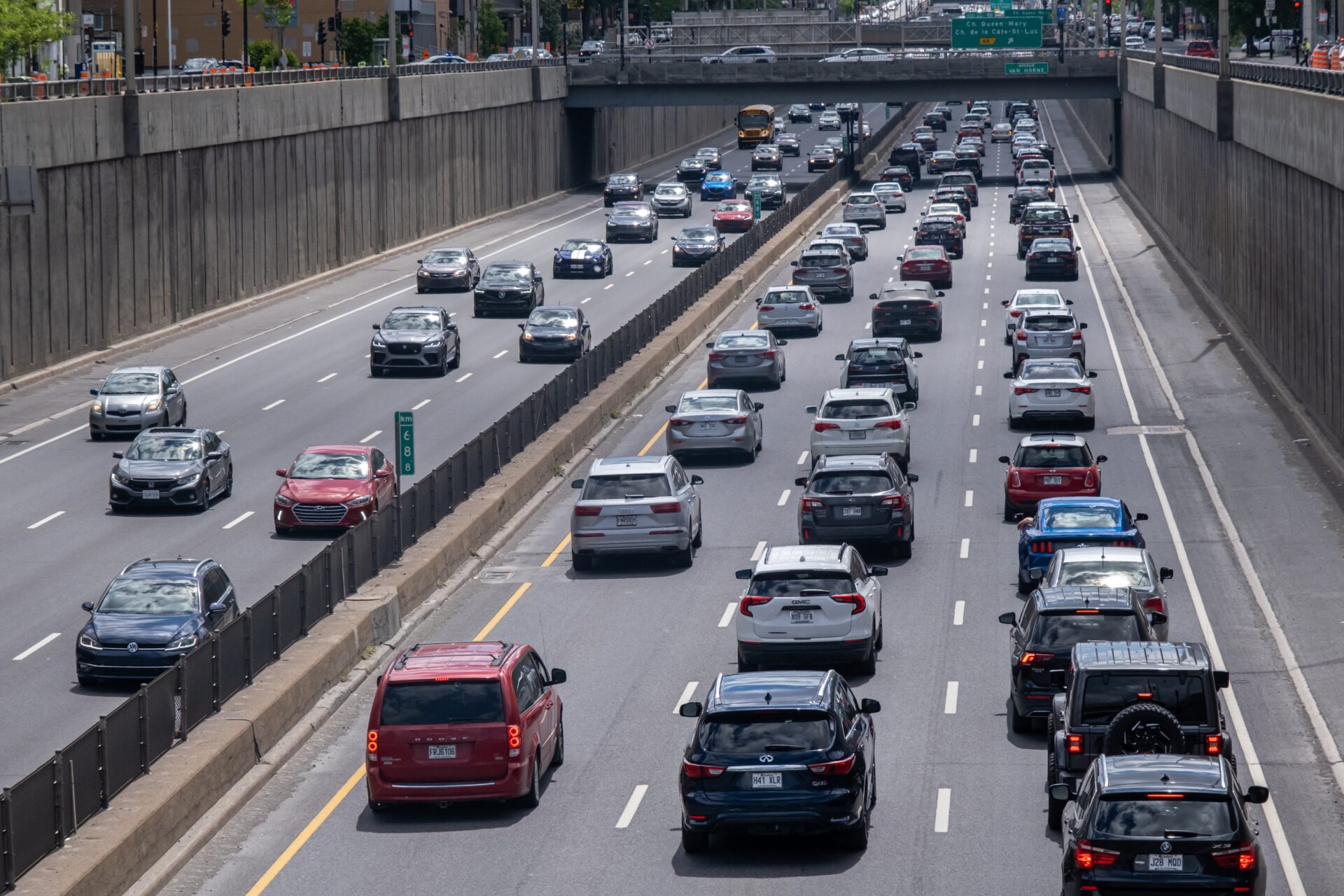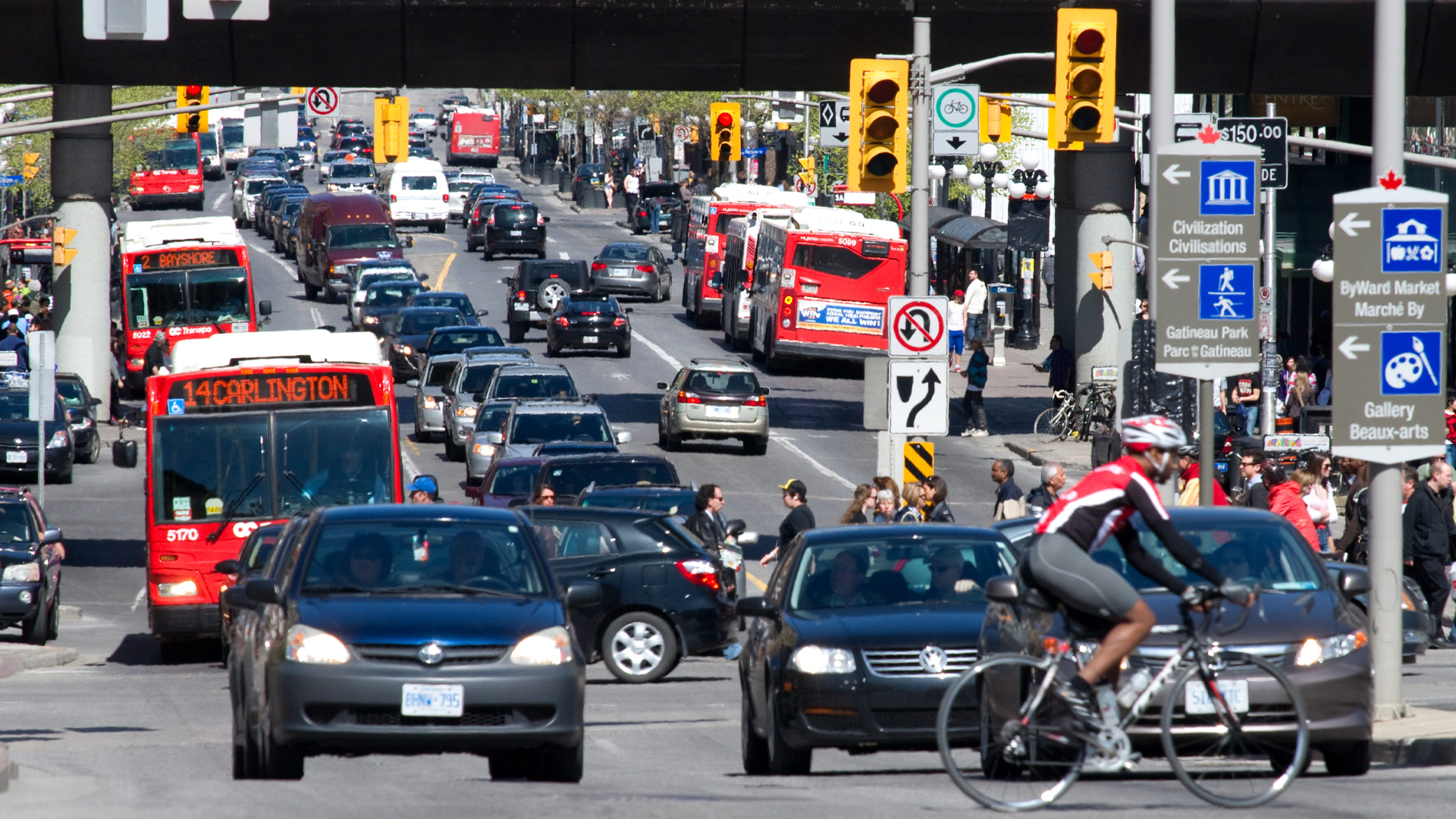
(Version française disponible ici)
What’s so picturesque about any street in Japan, city or country? Buildings and street furniture whose modernity we recognize, but that have obviously reached it through the paths of an architectural tradition quite different from our own? The colourful signs whose vertical display satisfies a certain taste for the exotic in the Western eye? The local flora and rain canals strewn with cherry blossom petals?
A bit of all that, certainly. But after a while, you realize that what really catches the eye is an absence: no vehicles parked like garlands of sheet metal and rubber along the streets.
No parking? No car!
In Japan, almost 95 per cent of streets have no parking spaces. Zero. Before you can register a vehicle, you have to obtain a Shako Shomeisho, a certificate proving that you own or rent a private parking space. And even if you could find a way of falsifying such a document, you’d have nowhere to park: Overnight parking on the street has been illegal since 1957. You’ll be promptly towed and fined.
Of course, Japanese residents living outside the major centres have no problem providing proof of parking. And city dwellers are so well-served by the rail network that complaining about the difficulty of circulating freely by car in the city can only seem far-fetched. Such a measure is a good compromise, since it doesn’t prevent city dwellers or those living outside the major centres from getting around. If a similar measure were to be adopted in Quebec, the number of Bouchervillois or Saguenéens negatively affected would be anecdotal. Who doesn’t own a private parking spot?
The combination of these measures and years of massive investment in public transit since the end of the Second World War (at a time when virtually all major American cities – along with Montreal – were dismantling their streetcar networks) have made Tokyo the least car-dependent of the major cities in wealthy countries.

Too much space can also be a problem
Of course, it’s important to remember that these rules were designed to, among other things, accommodate limited urban space and narrow streets to keep them from being blocked by cars. In America, space is not an issue, and that’s precisely the problem.
As a result, manufacturers have been able to go bigger and bigger. And convince us that this is what we want. By 2020, 79 per cent of ads in Canadian periodicals featured light trucks (pickups and SUVs). The strategy is working: In 2022 in Quebec, three times as many SUVs were sold as cars (198,340 vs. 62,357). Even pickups (64,454) sold in greater numbers than cars.
We’re not going to transform Montreal into Tokyo next week, but if we’re going to reduce the population’s dependence on their two tons of private sheet metal, we’ve got to start with minds, especially those of the people who decide how public space is laid out.
We could follow the example of the laws passed against cigarettes. Eventually, car ads would have to be banned altogether.
Kudos to those who cry “war on the car” at this point. They understand what we’re talking about. This is exactly the plan, just as it was for the war on tobacco. The ban on car ads should be seen as a public health measure. Tokyoites’ life expectancy of around 84 years is one of the highest among major metropolises. The quality of the air, quite good for the world’s largest megalopolis, is undoubtedly a factor.
And do we need to dwell on the need to simply turn away from cars to slow climate change? Of course, the sale of gasoline-powered vehicles will be banned in Canada by 2035, but the environmental and human cost of electric vehicles is far from zero. The electric car is there to save the auto industry and the lifestyle that goes with it, not the planet.

The egg, the chicken or the SUV?
North Americans are stuck with a chicken-or-egg problem. Urban density is not prioritized because it is thought to exacerbate congestion problems. But congestion exists precisely because everyone needs a car to get around, because shops and workplaces are far from home, because we don’t prioritize urban density. Not to mention the fact that the more cars there are, the greater the risk of accidents.
It’s all very well for manufacturers to extol the safety of light trucks. The safest vehicles for drivers are also the deadliest for other road users. In 2021, Canada recorded 4.6 road accidents involving injury or death per million inhabitants, compared with 2.6 in Japan. The worst result is found among our neighbours: 12.9 accidents per million inhabitants in the United States, almost three times the G7 average. This is not surprising in a country where, between pickup trucks and SUVs, there is only one sedan in the top 10 best-selling vehicles, and where not only bike lanes, but even sidewalks are often absent from the road network.
Can new investments put a dent in Canadians’ car dependence?
To forbid Montrealers from owning a car tomorrow morning if they don’t have parking would, of course, be unfeasible. Rather, it’s a goal we must strive for, with alignment in our policies. The Japanese example shows that measures to get cars out of the landscape must be accompanied by alternative measures.
The war on the car requires more than a guerrilla war of pedestrianized streets for a few months a year and road markings that de-icing salt washes away every winter. We need to rebuild our public spaces outright: massive investment in public transit, revision of zoning policies to promote density, integration of infrastructure projects between different municipalities, obligation to build bicycle lanes separate from car lanes whenever work requires redoing the roadway, and installation of bollards everywhere else. The idea is not to prevent people from driving, but to give them practical, efficient alternate options where they feel as safe as in a Land Rover or Hummer.
In the meantime, regulating car advertising would send a strong signal that we’re entering a new era.

Showing reality
We’re not extremists, so let’s take it one step at a time. To pave the way for a complete ban on car ads, let’s start by simply requiring that they be shot on the road, in real-life conditions. Gone would be the almost invisible words at the bottom of the screen, such as “professional driver on closed circuit.”
Filming would have to take place on public roads, in the real-life conditions that await buyers who are led to believe that they’ll be doing doughnuts in a snowbank at the top of the Rockies with their Ford F-150, going 100 km/h down a dirt road between two spruce plantations from which no deer will ever leap, or that they’ll be racing down a major urban highway at breakneck speed, never letting the engine drop below 4,000 rpm.
The ads would show the everyday use for the majority of buyers of huge vehicles that offer less forward visibility than an M1 Abrams battle tank: manoeuvring in a mall parking lot, carrying the kids to soccer, or waiting your turn to change lanes in rush-hour traffic. Or, for advertisers hell-bent on showing sporty driving as it happens in real life: try to turn right in Montreal without running over a cyclist riding in the huge blind spot of a truck that the auto industry has falsely sold to us as a passenger vehicle.
Showing these vehicles in their real-life driving conditions would tell us straight out what they really are: dangerous two-ton machines – and often more – that require terribly expensive infrastructure to build and maintain, and that occupy the majority of our public spaces.
After all, the Competition Act does contain provisions against misrepresentation, doesn’t it?










